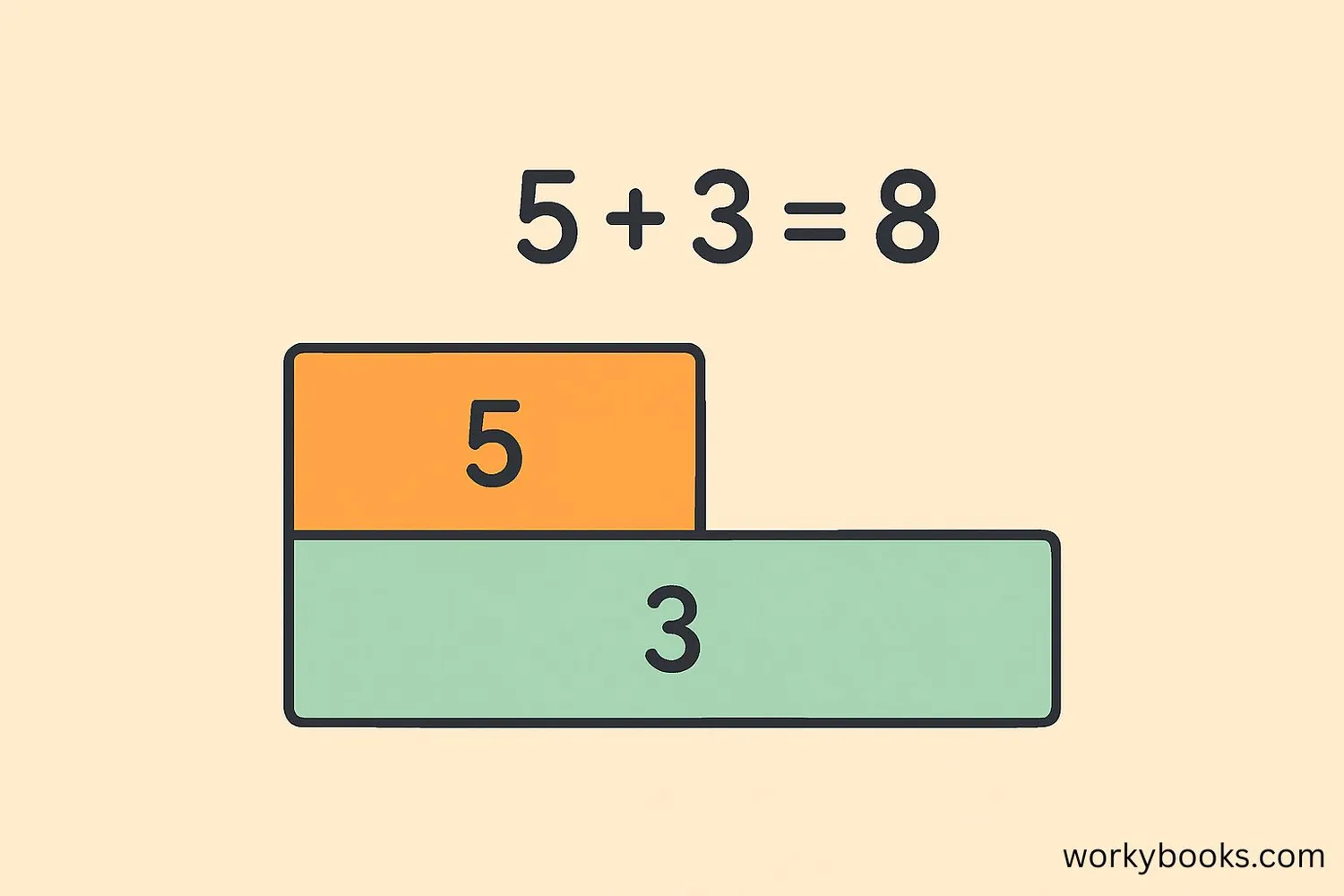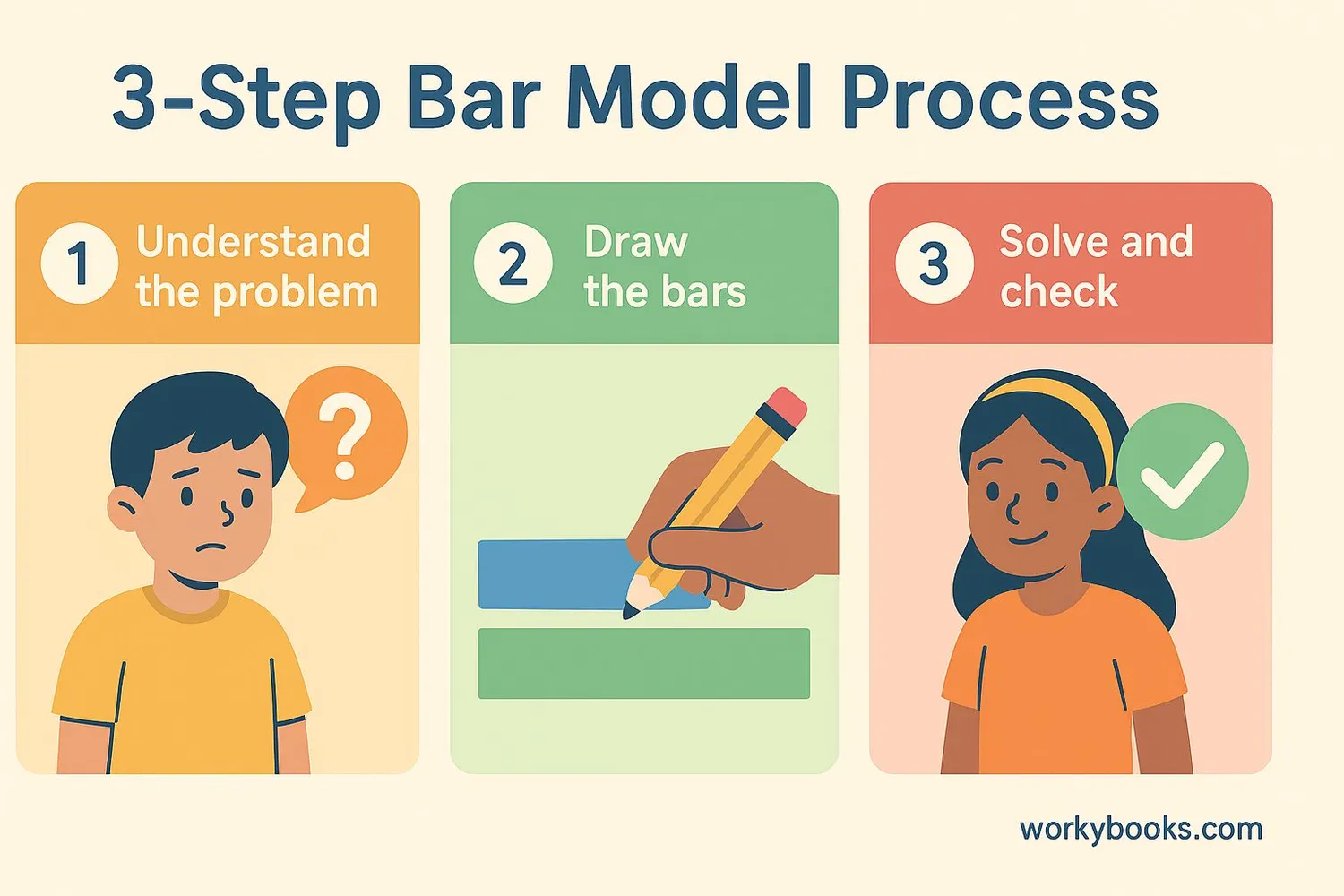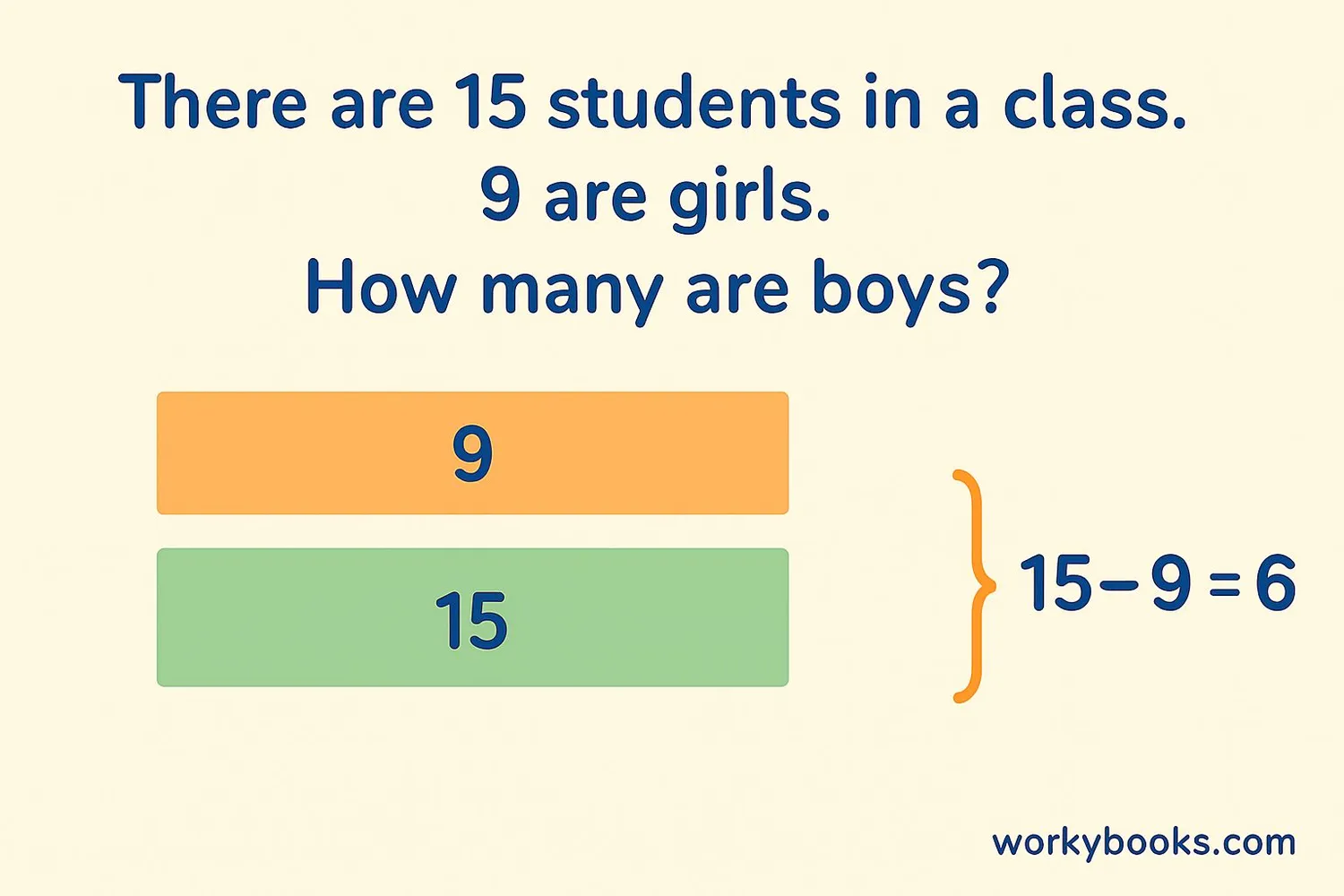Bar Model - Definition, Examples, Quiz, FAQ, Trivia
Learn to solve math problems visually with the Singapore math method
What is a Bar Model?

A bar model is a visual math tool that uses rectangular bars to represent numbers and the relationships between them.
It helps students understand math problems by showing quantities visually rather than just with numbers.
Bar models are especially helpful for solving word problems because they make abstract math concepts concrete and visual.
This method was developed as part of the Singapore math approach and is now used worldwide.
Think of bar models as pictures that tell a math story. They help you see:
- What quantities you know
- What quantities you need to find
- How different quantities relate to each other
Why Bar Models Work
Bar models turn abstract numbers into visual blocks that are easier to understand and manipulate. They help students see the "why" behind math operations.
How to Use Bar Models

Using bar models involves three simple steps:
Step 1: Understand the problem
Read the word problem carefully. Identify what you know and what you need to find out. Underline important numbers and words like "total," "more than," or "less than."
Step 2: Draw the bars
Draw rectangular bars to represent the quantities in the problem. Make sure the lengths of the bars show the relationships between amounts.
- Equal bars for equal amounts
- Longer bars for larger amounts
- Shorter bars for smaller amounts
Use your bar model to write the math equation. Solve the equation and check if your answer makes sense with the problem.
Remember: Bar models help you organize information visually before doing the actual math!
Bar Model Tip
Start with simple models using just one bar. As you get more comfortable, you can create more complex models with multiple bars.
Types of Bar Models
There are three main types of bar models used to solve different kinds of math problems:
Part-Part-Whole Model
Used for addition and subtraction problems. Shows how smaller parts combine to make a whole.
Example: If you have 5 red marbles and 3 blue marbles, how many marbles do you have altogether?
Comparison Model
Used to compare two or more quantities. Shows how much more or less one quantity is than another.
Example: Sara has 8 stickers. Ben has 5 stickers. How many more stickers does Sara have?
Fraction Model
Used for fraction problems. Shows parts of a whole and helps solve fraction operations.
Example: A pizza is cut into 8 equal slices. You eat 3 slices. What fraction of the pizza is left?
Choosing the Right Model
Look for keywords in the problem: "total" or "altogether" suggests Part-Part-Whole, "more than" or "less than" suggests Comparison, and fraction words suggest Fraction Model.
Bar Model Examples

Let's solve some problems using bar models:
Example 1 (Part-Part-Whole): There are 15 students in a class. 9 are girls. How many are boys?
Solution:
Example 2 (Comparison): A book costs $12. A toy costs $5 more than the book. How much do both cost together?
Solution:
Visual Problem Solving
Bar models turn word problems into visual puzzles. If you can draw it, you can solve it!
Bar Model Quiz
Test your bar model skills with this 5-question quiz. Choose the correct answer for each question.
Frequently Asked Questions
Here are answers to common questions about bar models:
Math Trivia
Discover interesting facts about bar models and math:
Singapore Math Success
Singapore consistently ranks at the top in international math assessments. Many educators believe their visual approach, including bar models, is a key reason for this success.
Visual Learning
Research shows that about 65% of people are visual learners. Bar models help these students understand math concepts that they might struggle with using only numbers and words.
Global Adoption
First developed in Singapore in the 1980s, bar models are now used in math classrooms worldwide, including the United States, UK, Australia, and many other countries.
Problem Solving Skills
Students who learn with bar models develop stronger problem-solving skills that help them not just in math, but in science, logic puzzles, and everyday decision-making.





